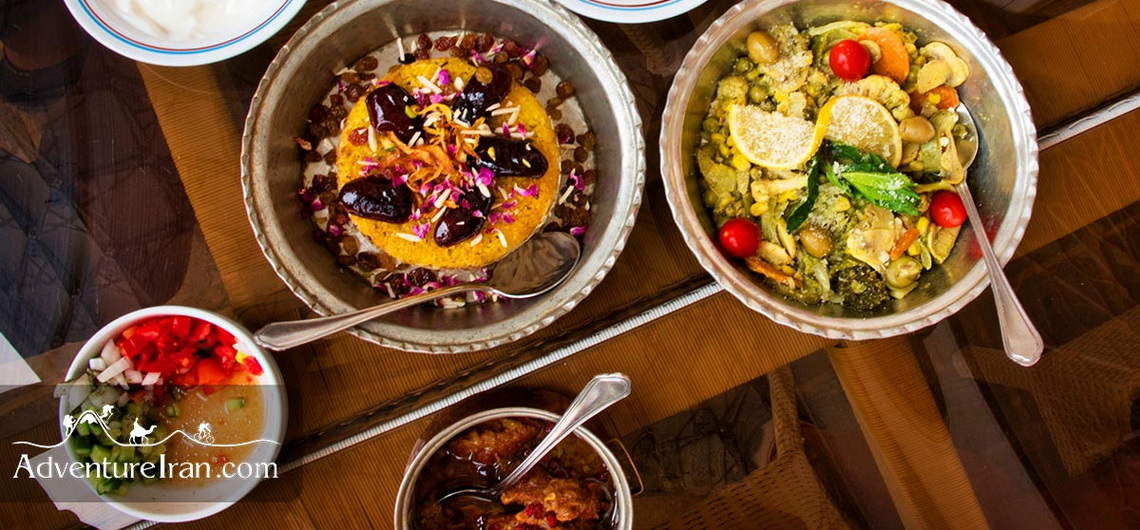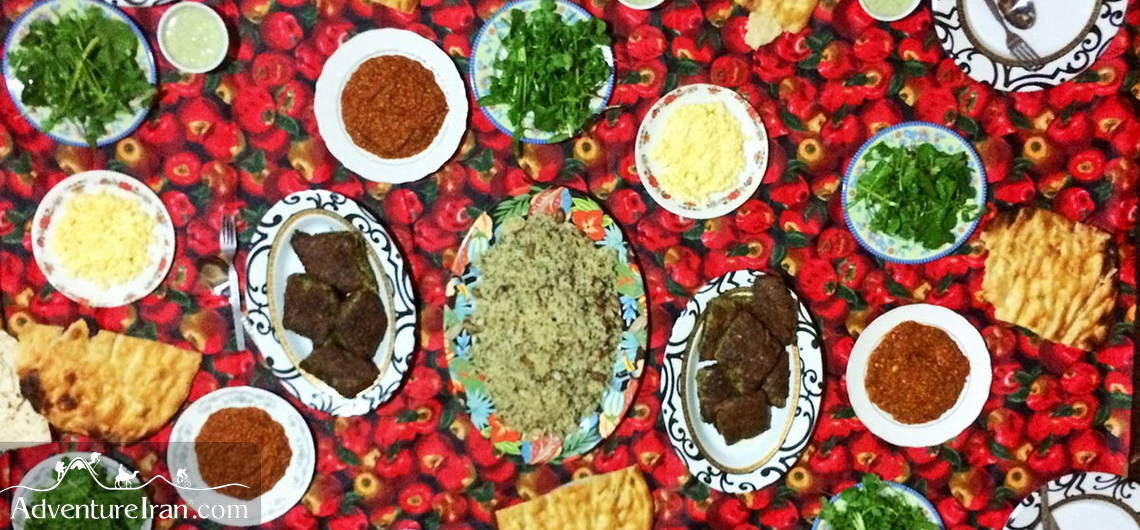Persian Food
Iran has a great variety of food. If we want to write a list of Persian food, we would probably need several books. Of course, this food does not include sweets, bread, jams, pickles, and salads. Delicious traditional food throughout Iran has its own unique flavor in each region. If you ask foreign tourists about the features of Iran, most of them are totally satisfied with Persian cuisine, paying compliments to the exquisite Iranian dishes.
Basically, Iranians have good taste. Each city has its own delicious specialty which they are proud of. Iranians are accomplished connoisseurs. When traveling, it is recommended to try that city’s ‘special’ not only for it is a traditional meal but also because it represents the geographical, economic, and social conditions of that specific city.
Iranian food is an interesting part of cultural life. The table is highly regarded as a symbol of respect as it is widely believed that food is God’s blessing. Disrespect for food is equivalent to disrespecting God. In addition, the table is a valuable place where family members interact with each other during the day. Eating alone is somehow disrespectful to family members and signifies a broken family relationship.
Iranians are capable cooks too. Their food diversity is countless where they use the most nutritious and healthiest ingredients available to prepare traditional food. In Iranian traditional medicine, which is part of the Iranian food culture, all edibles are divided into 4 categories in terms of human nature: dry, moist, cold, and hot. On the basis of this, Iranians believe they have to strike a balance between the consumption of a varied diet. Otherwise, their body and soul will become sick.
Iranians eat with spoons and forks, rarely using knives. Some food is first wrapped in bread, the so-called “loghmeh” (or bite in English). Bites are eaten by hand. Food, such as pottage and soup, is only eaten with a spoon.
Unlike western culture, where appetizers, meals, and desserts are brought to the table at certain intervals, in Iran, a variety of foods are arranged simultaneously on the table, and individuals eat them in a specific order. Iranian dishes are mostly time-consuming to prepare, unlike fast food, and perhaps this is the reason that lies behind the way they are served.
Certain food is forbidden in Persian culture. Pork, and all its products, is one of them, and the reason for this prohibition goes back to religious and health values.
Like other people in the world, Iranians have two types of hot and cold drinks, tea being the most popular hot drink. Black tea is served with natural flavors such as rose petals, saffron, or cinnamon to make it more fragrant. It is also accompanied by traditional sweets such as rock candy, Gaz, Poolaki, and Noghl. Sugar cubes are also available to sweeten it. Coffee is also common in some southern regions. Doogh (a yogurt-based beverage) is also a traditional cool drink that is served with main meals. Various herbal distillates mixed with sugar and water are also used as sherbet. Generally, traditional drinks and herbal teas are an important part of Persian Food culture.
Taste Persia through Adventure Iran‘s Persian food tours in different regions of Iran.


